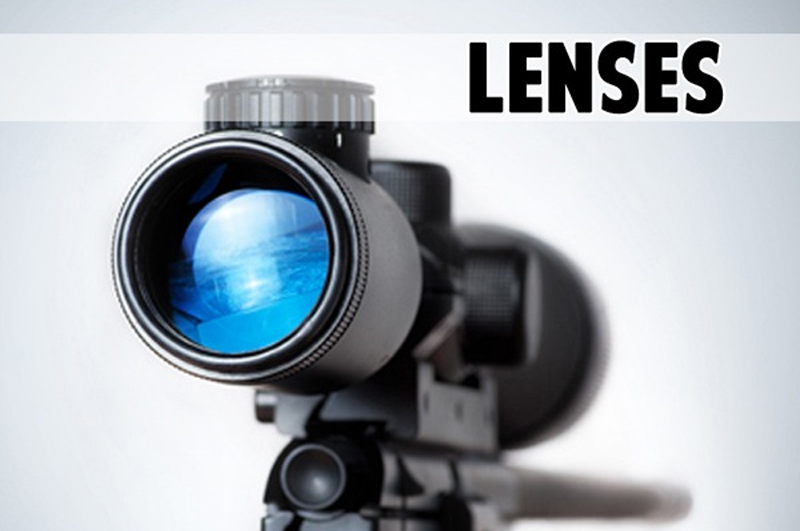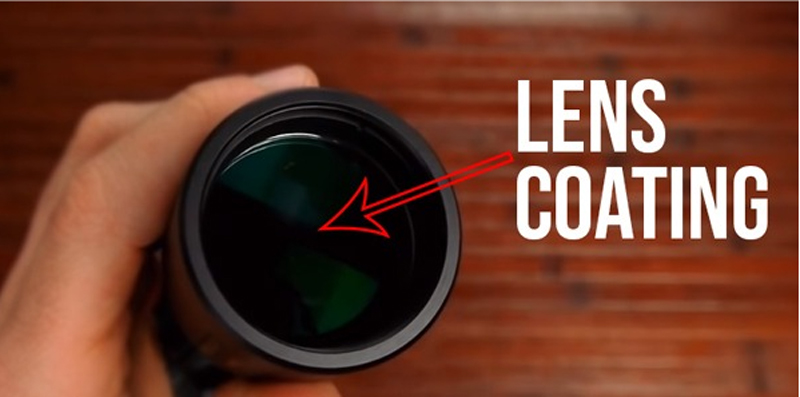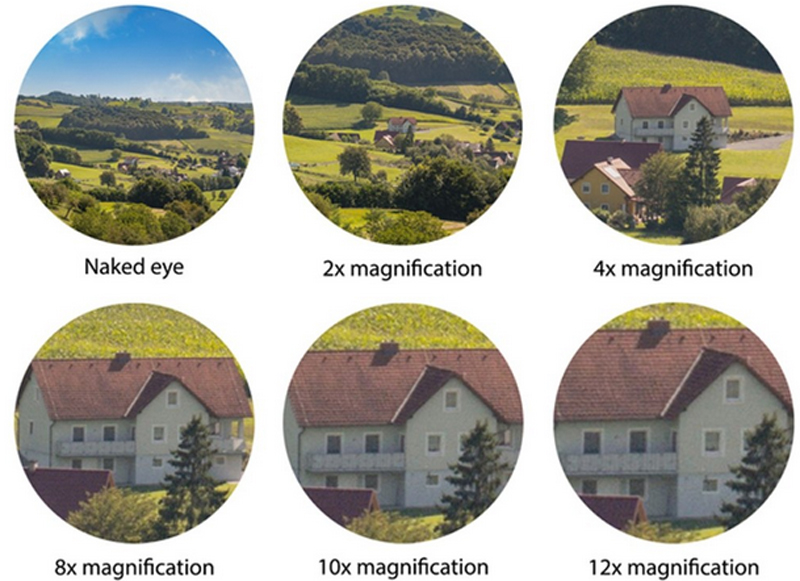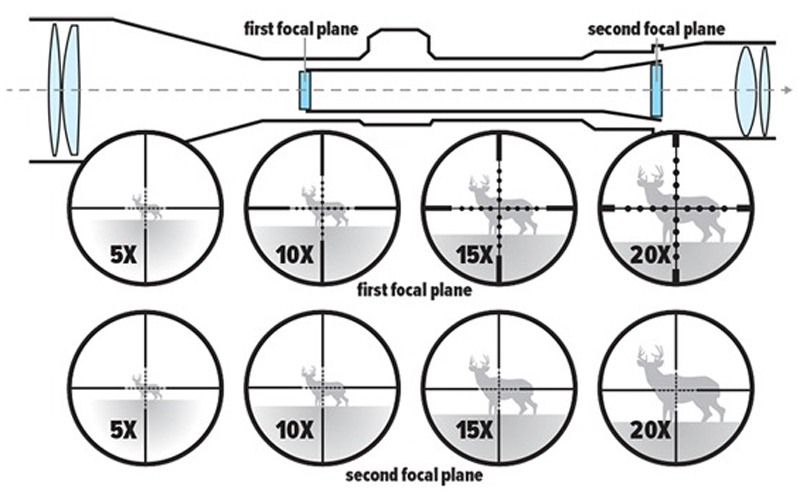What makes a good rifle scope? Good question right? One might immediately say a solid build quality, good lens clarity, well-known brand, etc.
Well, you guys aren’t entirely wrong. But there is so much more to this that beats the eyes.

Well, we are here today to answer this question. Hope you are having a great time.
This won’t be like our traditional reviews with big headlines and whatnot. We are just here to talk with you guys about the thing that we think makes rifle scopes great. But we are going to explain it in different paragraphs. So, look forward to that.

A rifle scope is mounted on your gun to enhance your vision by zooming in your target aka magnifying it. By default, your eyes can’t catch the smallest target in distance.
But with the help of a good rifle scope, you can minimize the distance by zooming on to your target and using the reticle to your advantage to calculate bullet drop and take an accurate shot, or at least that’s how we see it. The literal explanation might differ but this is the basis of how it works or how it’s used.
Let’s start with the obvious,
Build quality, you need to have an excellent build quality to call your scope great. It’s a must. Now let us be clear that we don’t think only aircraft-grade aluminum is good to rest as trash, no you are wrong. Aluminum is a great type of material to make a rifle scope.
Some companies use aircraft-grade aluminum, the same thing that is used to make aircraft bodies. They can be quite expensive sometimes. But it is true that aircraft-grade aluminum is superior to the regular type of aluminum, but that doesn’t mean that the regular one is trash or of bad quality. It is similarly good. Both materials can be used to make top-notch quality housing for a scope.
What we are getting at is that you need to have a great material used in your scope to make it a long-lasting scope which won’t break at the moment you decide to fire a shot using your gun.
The great body makes sure that it has a great recoil absorption power. Great body means great longevity, great shock absorption, weatherproof, rugged, etc. A great build quality is a must to make a great rifle scope.The glasses you see through from your scopes are lenses. There are 2 lenses in each scope one at the shooter end named ocular lens the other at the target end named objective lens.

You normally see those objective lenses are bigger than the ocular lens because your FOV (Field of View) depends on the objective lens diameter. No, that doesn’t mean that the bigger your objective lens is the better your scope is. Lenses are made out of glass.
Most companies use top-end glass to make their lenses and make sure that their lenses stay in the housing and don't tend to rotate or pop out. People think that the bigger objective lens I have the bigger my targets will appear in my vision.
No, you are wrong, the bigger objective lenses are to control the brightness distribution of the scope. If you had lenses in your list of what makes a great rifle scope, then we wholeheartedly agree with your opinion.
People tend to ignore this part, as they think coating doesn’t matter as long as the scope has waterproofing. But in reality, the coating does matter. With modern technology and chemicals, you can increase the brightness and clarity of your objective lens through the coating.

The company uses a different kind of coatings to make the scope fog proof, give better clarity at night. There are several types of coating involved in the scope making.
“Coated” means a single layer of coating is applied to an objective lens.
“Fully-Coated" means that both of the lenses have a single layer of coating.
“Multi-Coated” means that the objective lens is coated with multiple layers of coating.
“Fully Multi-Coated” means both of the lenses are coated with multiple layers of coating to give optimal sighting.
Another important part of the scope reticle. There are so many reticles out there with their advantages and disadvantages it will be too much to explain in this article. For your convenience, we are breaking the reticle section in 3 mini categories which we think you should be easily able to grasp.

First one is nothing fancy, just the old school simple Crosshair. It’s not anything fancy. But it works. It works great for a certain type of shooter. It is not for everyone that’s a given one. But if you like the minimal reticle design and you have used a red dot or simple crosshair scopes in the past this one's for you guys.
In the second category, we have ones that have some little dots or lines or perhaps numbers in the bottom vertical line. Those can be MIL based. They are mainly used to grasp the bullet drop and use it accordingly. It doesn’t need to be something fancy but something easy to understand and get the hold of.
The third one is the one where your reticles are fully marked. Each marking has their own work and can mean something. To be honest this is some military-grade things I wouldn’t suggest this for the consumer level. But it's there for anyone if need it.
The main reason you need a scope is the magnification. Basically, you need a scope in the first place to have that sweet magnification. Now a lot of people things that bigger magnification is better. That’s totally false and a stereotype.

You don’t need to get more than you need. For example, you are hunting. You don’t need a 20x zoom rifle scope to hunt. A 4-6x is more than enough. That also doesn’t mean you shouldn’t buy a higher power scope. You obviously can use any range scope as long it satisfies your need.
But what we are trying to say is don’t waste money on a scope that won’t benefit you by any means. At the end of the day, you should focus more on lenses and coatings to get a clear view. A good enough magnification is a must for a great rifle scope.
If your scope isn’t giving constant eye relief you are bound to destroy your face. You should consider two things in the matter of eye relief.

If you are using anything below a .270 caliber you should be fine with the default eye relief. But if you use a larger caliber than that then you need to properly judge your body language and determine how the recoil pattern acts and find out the suitable eye relief for your safety.
The other thing you should consider is if you are wearing glasses the minimum amount of eye relief is 14mm. Most of the scope does come with more than 14mm of eye relief so you should be safe about that.
Field of view aka FOV is what we call the viewable area through the objective lens. It means that whatever the area you are seeing through your objective lens is your FOV. The importance FOV plays is that it's easier to find targets.

For example, your scopes field of view is 8 feet but if you try to hunt a deer you might not catch it because of the small field of view. But on the other hand, if you had a scope which had like 20 feet of the field of view you could easily see that deer.
Another important thing to consider while buying a scope. There are 2 kinds of the focal plane. One is the Second Focal Plane (SFP) the other is the First Focal Plane (FPP). If your scope is in the second focal plane no matter how much you zoom in your reticle won’t move or zoom in alongside.

But if your scope is in the first focal plane then your reticle is going to zoom in alongside your magnification. It actually doesn’t matter which scope you use, both of them will have the same point of impact. FFP scopes generally cost more than SFP scopes.
Well, folks, we have reached the end of our points that make a great rifle scope. We believe we mentioned some quite good points and some deal-breaker points too. Yes, we know we didn’t mention the turrets or zooming ring, but to be honest, turret mostly depends on the building quality material so, if your scope is made out of good material it is somewhat bound to have good turrets and zoom rings.
With that said we hope you enjoyed our little article about what makes a good rifle scope.